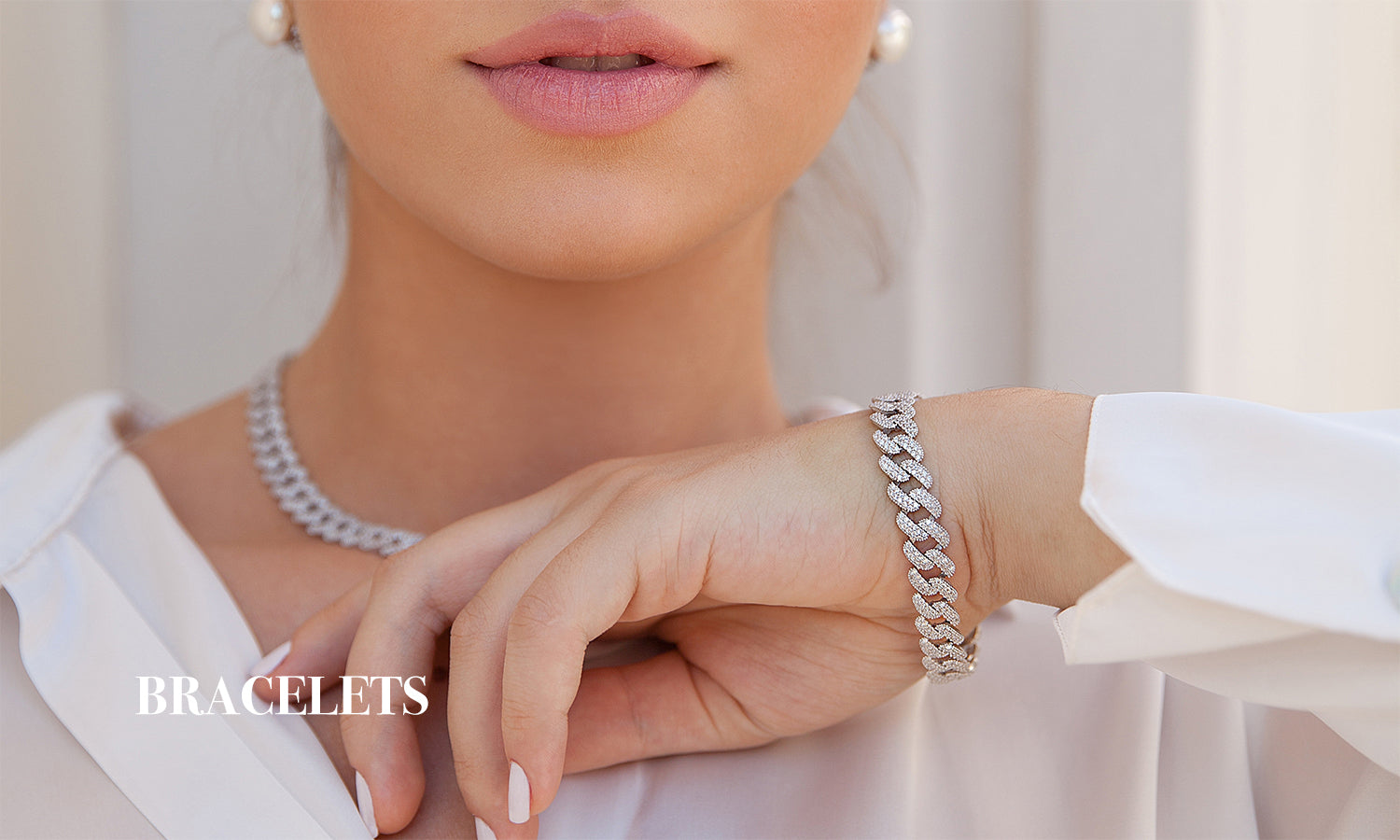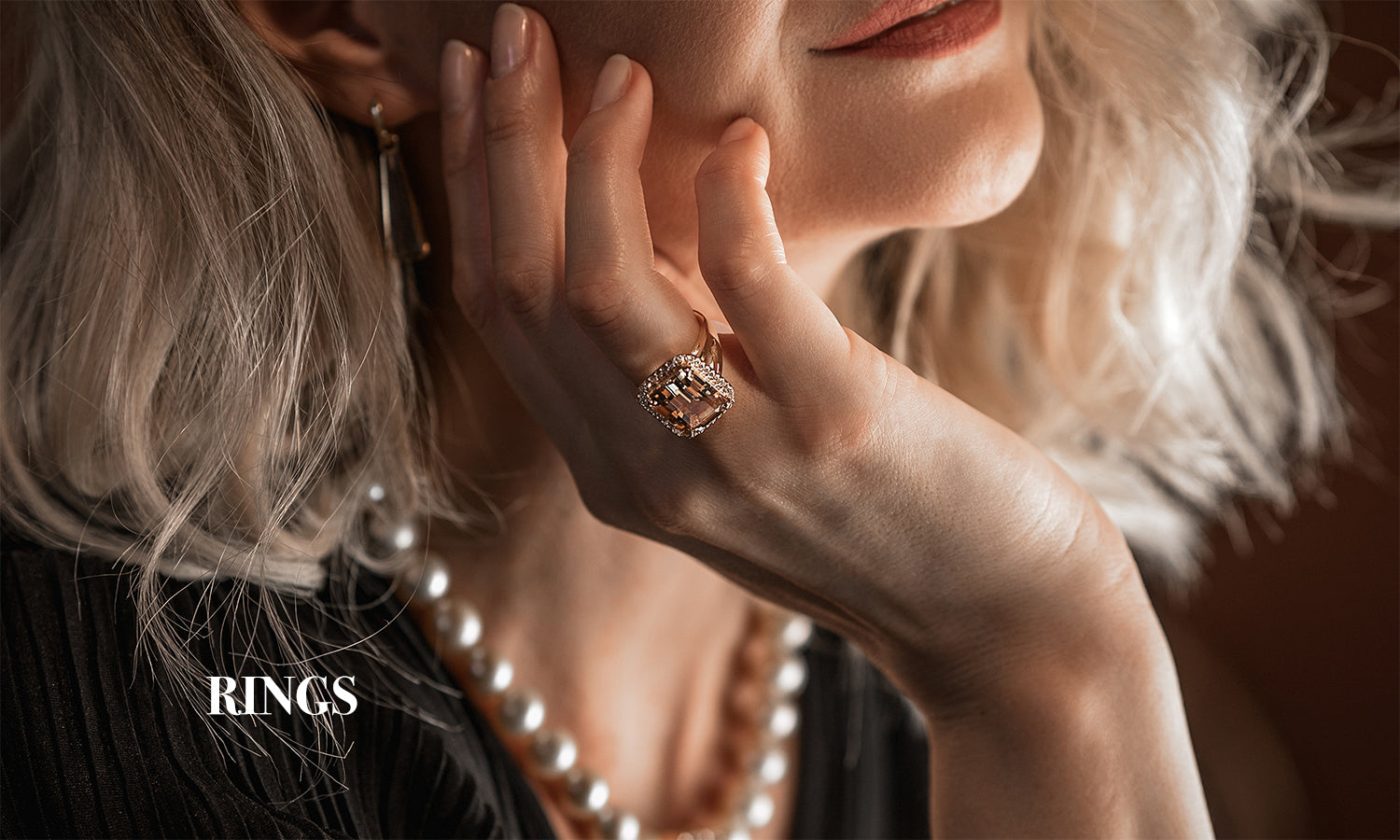Discovering the Beauty of Necklace Art

- Necklaces are one of the oldest forms of jewelry, with examples dating back thousands of years.
- Necklace art has evolved with new materials, designs, and craftsmanship.
- In this blog, we'll explore the creative world of necklace art, uncovering the unique designs and craftsmanship.
History and Development of Necklace Art
- Necklaces have been around since ancient times, with the earliest examples dating back to the Stone Age.
- Ancient necklaces were made from natural materials like shells, bones, and stones and were often seen as symbols of status or religious beliefs.
- Over time, necklace art has developed with ever more intricate designs and materials.
- Gold and silver have been used to create stunning necklaces, and other materials such as glass, ceramic, and plastic have also been used to create unique designs.
- Today, necklace art is a vibrant and creative field with many styles and techniques.
Unlocking the Artistry of Necklace Designers
The creative world of necklace art is fascinating, with a wide range of unique designs and craftsmanship. Necklace designers constantly experiment with different materials, styles, and techniques to create stunning jewelry pieces. In this blog, we'll take a closer look at the artistry of necklace design, exploring the creativity and skill of these talented artists.
The Art of Beading
Beading is one of the most popular techniques used by necklace designers. This involves stringing together small beads to create intricate and beautiful designs. Beading is a craft that requires a great deal of skill and patience. The beads must be carefully chosen and arranged to create the desired effect. Nevertheless, skilled beaders can create stunning necklaces with complicated patterns and vibrant colors.
Wire Wrapping
Wire wrapping is another popular technique used by necklace designers. This involves wrapping wire around a stone or other material to create a unique and eye-catching design. Wire wrapping requires excellent skill and precision, as the wire must be carefully wrapped around the material to create the desired effect. Wire-wrapped necklaces often feature intricate and delicate designs, making them perfect for special occasions.
Clasp Design
Clasp design is another essential aspect of necklace art. The clasp is a necessary part of the necklace, as it helps to secure the piece and keep it in place. Clasp design requires excellent skill and attention to detail, as it must be aesthetically pleasing and functional. Necklace designers must be able to create reliable and secure clasps that are also visually appealing.
The Art of Setting
The setting is another important technique used by necklace designers. This involves securing stones or other materials to create a finished piece. Setting requires excellent skill and precision, as it must be done to create the desired effect. In addition, necklace designers must be able to secure stones or materials without damaging them.
Exploring the Intricacies of Craftsmanship
Craftsmanship is essential to necklace art, as it involves creating beautiful and unique jewelry pieces. Necklace designers must be skilled in various techniques to create stunning pieces. In this blog, we'll explore the intricacies of craftsmanship, discovering the skill and creativity of these talented artisans.
Precision and Attention to Detail
Precision and attention to detail are essential for necklace craftsmanship. Necklace designers must be able to create aesthetically pleasing and functional pieces. This requires great skill and accuracy, as even the smallest mistake can ruin the piece. In addition, necklace designers must be able to create beautiful and reliable pieces.
Creativity and Experimentation
Creativity and experimentation are also crucial for necklace craftsmanship. Necklace designers must be willing to try new materials, styles, and techniques to create unique and eye-catching pieces. Creativity and experimentation can help to create pieces that stand out from the crowd. In addition, necklace designers must be able to come up with new and original ideas to create stunning pieces of jewelry.
Knowledge of Materials
Knowledge of materials is also crucial for necklace craftsmanship. Necklace designers must be familiar with different materials to create beautiful and durable pieces. They must also be able to select the suitable material for the right piece to create the desired effect.
Quality Control

Quality control is also a crucial part of necklace craftsmanship. Necklace designers must be able to create pieces that are of the highest quality. This requires careful inspection and testing of each piece to ensure it meets the highest standards. In addition, necklace designers must be able to create beautiful and reliable works.
Unearthing the Unique Designs of Necklaces
Discovering the unique designs of necklaces is an exciting process. Necklace designers constantly experiment with different materials, styles, and techniques to create stunning pieces. In this blog, we'll explore the unique designs of necklaces, uncovering the creativity and skill of these talented artisans.
Geometric Designs
Geometric designs are one of the most popular styles of necklaces. These designs feature intricate patterns and shapes, creating eye-catching pieces. In addition, geometric necklaces often feature bold and vibrant colors, making them perfect for special occasions.
Nature-Inspired Designs
Nature-inspired designs are another popular style of necklace. These designs feature natural elements such as leaves, flowers, and animals. In addition, these designs are often intricate and detailed, creating beautiful pieces of jewelry.
Vintage Designs
Vintage designs are also famous for necklaces. These designs feature classic styles and materials, creating timeless pieces of jewelry. In addition, vintage necklaces often feature intricate details and subtle colors, making them perfect for any occasion.
Statement Pieces
Statement pieces are another popular style of necklace. These necklaces often feature bold designs and vibrant colors, making them perfect for making a statement. In addition, statement necklaces are often eye-catching and unique, making them ideal for special occasions.
Awe-Inspiring Necklace Art: From Concept to Creation
The creative world of necklace art is fascinating, with a wide range of unique designs and craftsmanship. In this blog, we'll explore the awe-inspiring process of necklace art, from concept to creation.
Conceptualization
The first step in creating a necklace is the conceptualization stage. This involves developing an idea for the chain and deciding on the materials, style, and design. Necklace designers must be creative and imaginative to create unique and eye-catching designs.
Design

The next step in the process is the design stage. This involves creating a drawing or sketch of the necklace and selecting the materials and colors. Finally, necklace designers must be able to visualize the finished piece to create the desired effect.
Production
The production stage is the next step in the process. This involves creating the actual necklace using the materials, colors, and designs that have been selected. Necklace designers must have a great deal of skill and precision to create beautiful and functional pieces.
Finishing
The final step in the process is the finishing stage. This involves inspecting and testing the necklace to ensure it meets the highest standards. Necklace designers must be able to create aesthetically pleasing and reliable pieces.





